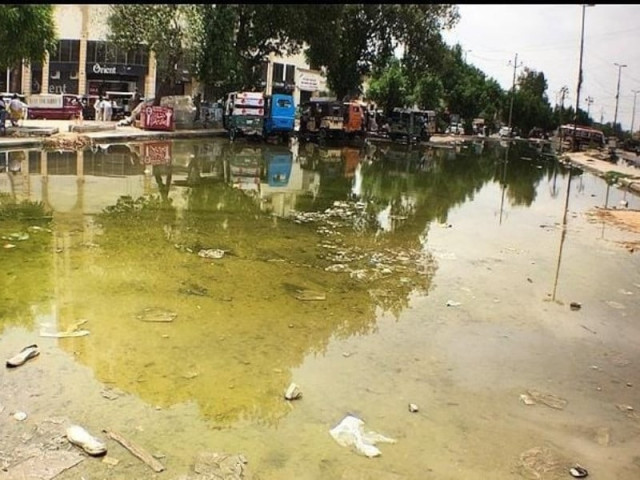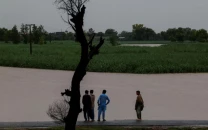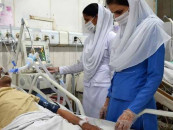Perilous puddles : Stagnant rainwater occupying roads
Shortage of diesel for pumps has delayed a timely extraction of the murky water

As the monsoon season approaches its timely end, its remnants are still lingering in Lahore, due to the Water and Sanitation Agency’s (WASA) inability to arrange diesel for fueling rainwater extraction pumps.
The past few months have witnessed unprecedented levels of rain across areas in the provincial capital, with 1,335 millimetres of rainfall recorded in the months of June, July, and August.
In the aftermath of the torrential rains, inadequacies in the rainwater drainage system managed by WASA alongside a paucity of diesel for powering water pumps, has allowed stagnant ponds of murky water to form in a number of areas including Harbanspura, Kahna, Mehmood Booti, and Shahdara - which is now culminating into the spread of diseases like dengue and diarrhoea.
“Countless areas of my locality are inundated since the past two months and we have been asked by WASA to pay for the diesel required for the water pumps,” informed Abdul Raheem, a resident of Harbanspura, who further added that WASA was facing a severe shortage of diesel needed for powering the water pumps.
According to a senior officer at WASA, even though WASA had installed water pumps in many important areas of the city for drainage, the shortage of funds for buying diesel meant that the machinery needed for pumping out the water was non-functional.
“Not only did the unavailability of fuel allow major areas of the city to remain submerged for months, but it also led to the unfortunate demise of 17 citizens,” added the officer.
Where inundated avenues and damaged wiring claimed the lives of a few, the growth of vectors and bacteria in stagnant water risks afflicting even more citizens.
As Mazher Iqbal, a local from the Old Ravi Bridge revealed that many empty plots surrounding his house had become ponds after the monsoon season.
“Due to this, mosquitoes and houseflies have started multiplying, allowing the spread of vector borne diseases like dengue and diarrhoea,” said Iqbal.
Dr Naveed Akbar Hotiyana, a medical practitioner, confirmed Iqbal’s conjecture by claiming that hundreds of cases of diarrhoea and fever were reported across different hospitals after the monsoon season. “Two patients of dengue have also been treated; however the majority of patients present signs and symptoms of diarrhoea and respiratory tract infections,” elaborated Dr Hotiyana.
Speaking to The Express Tribune on the matter, Chaudhary Muhammad Alam, Chief Meteorologist at the Pakistan Meteorological Department (MET) said, “we have two instruments for measuring rains in Lahore, with one installed at the Jail Road and the other near the airport.
The duty of MET is to measure
rainfall and provide information about the weather and updates on the risk of flooding. It is not our responsibility to oversee the drainage of rainwater.”
Published in The Express Tribune, August 21st, 2023.



















COMMENTS
Comments are moderated and generally will be posted if they are on-topic and not abusive.
For more information, please see our Comments FAQ